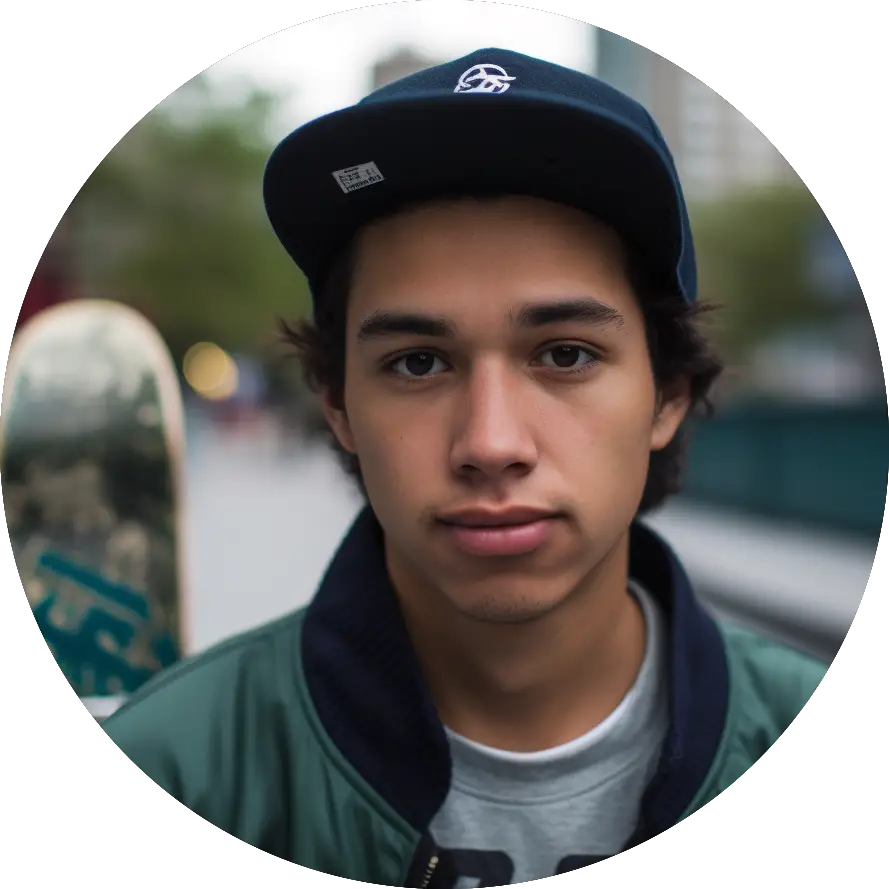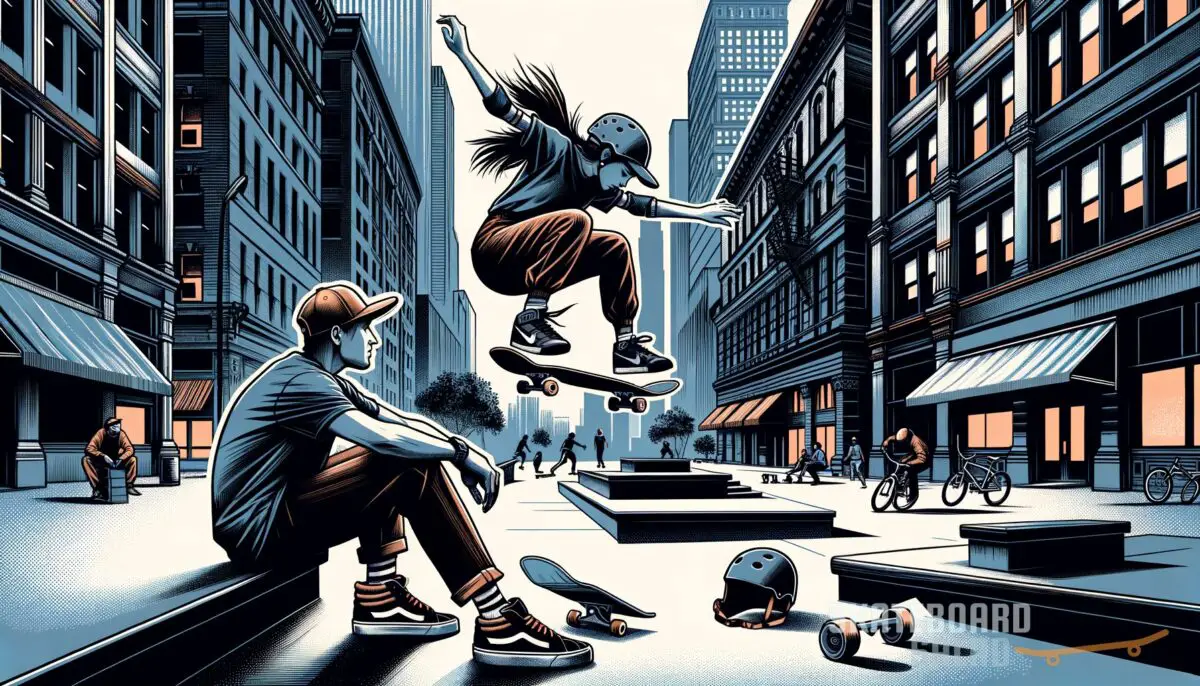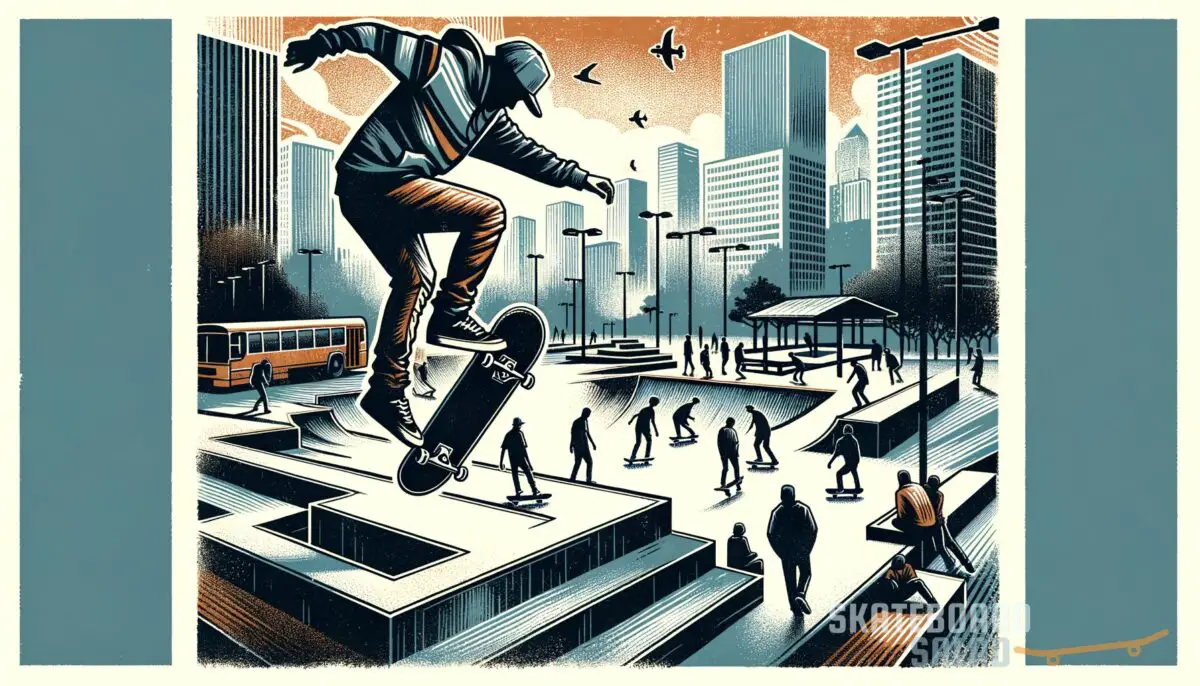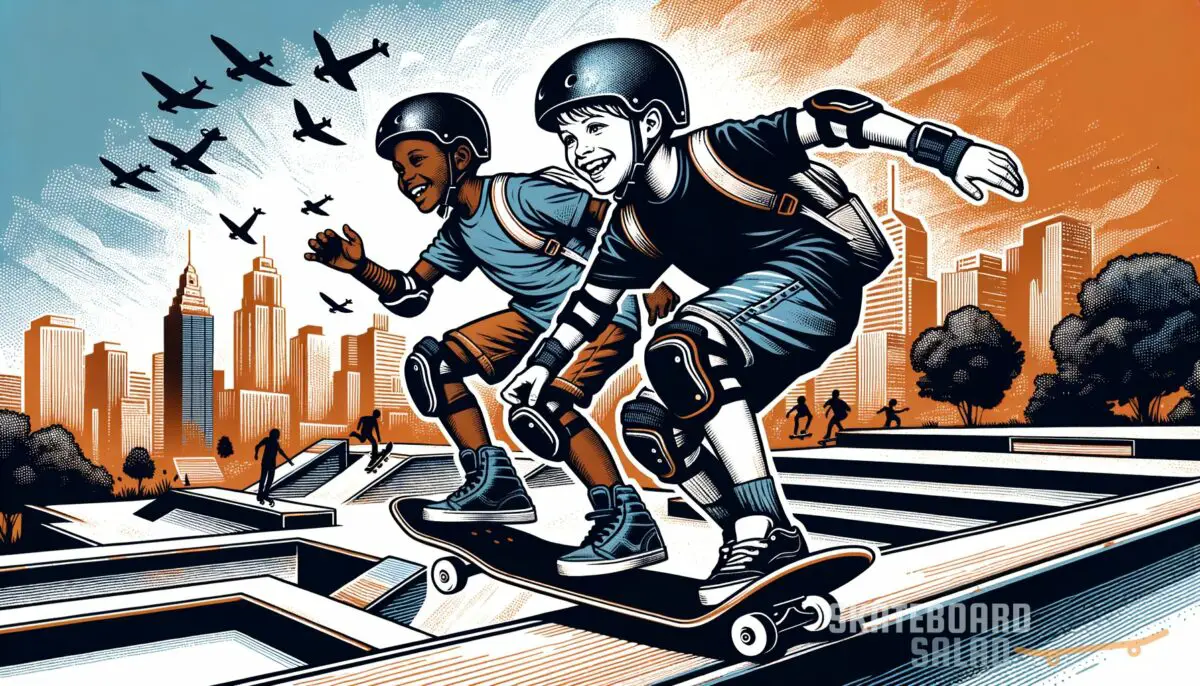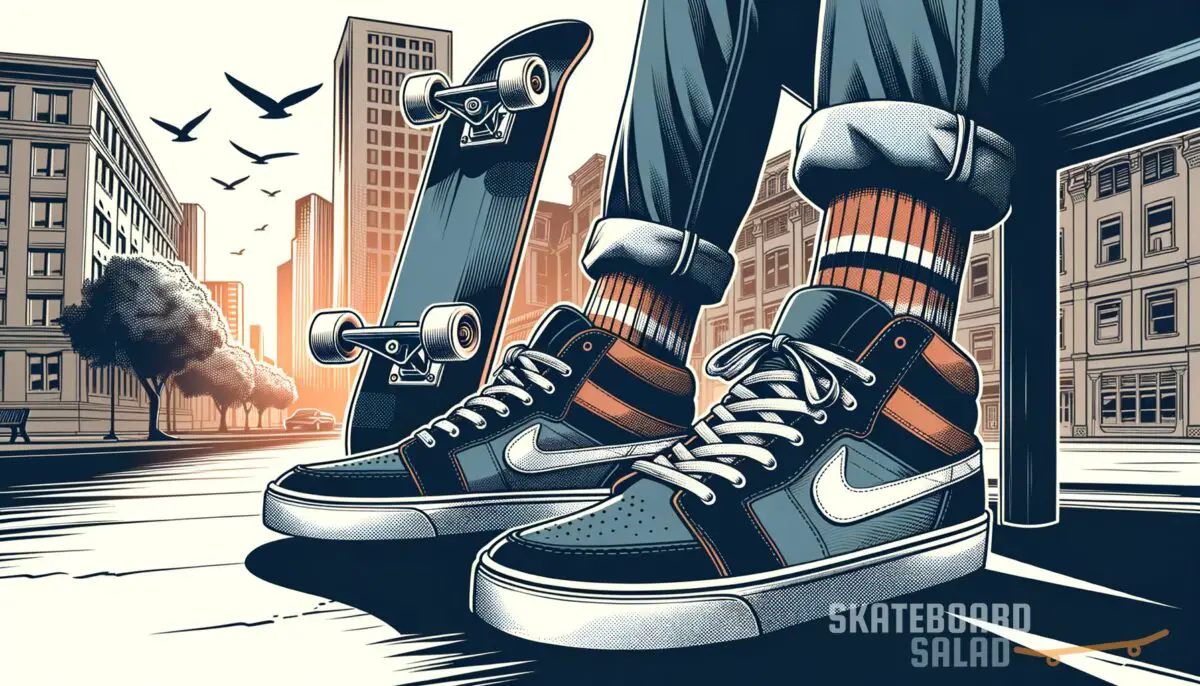Ever been cruising, carving your way through the city streets, and thought, “Yeah, I got this, but what comes next?” or “How can I take my carving skills up a notch?” then strap in, and we’re about to kickflip this up! For any skater, carving is a fundamental skill and a gateway to the exhilarating world of vertical skating, downhill bombing, or recreational street cruising. Essentially, it’s all about keeping your ride stable and maintaining that sweet momentum, whether you’re gnawing at the park’s curves or slicing down the suburban slopes.
What is carving on a skateboard?
Carving is the art of taking turns and maneuvers on your skateboard, using specific body movements and weight distribution to change directions and control speed. It’s about feeling the flow and bringing a certain rhythm to your ride, almost like dancing on wheels. It’s not just turning left or right; it’s a series of dynamic maneuvers that give you a greater sense of control and stability with your board.
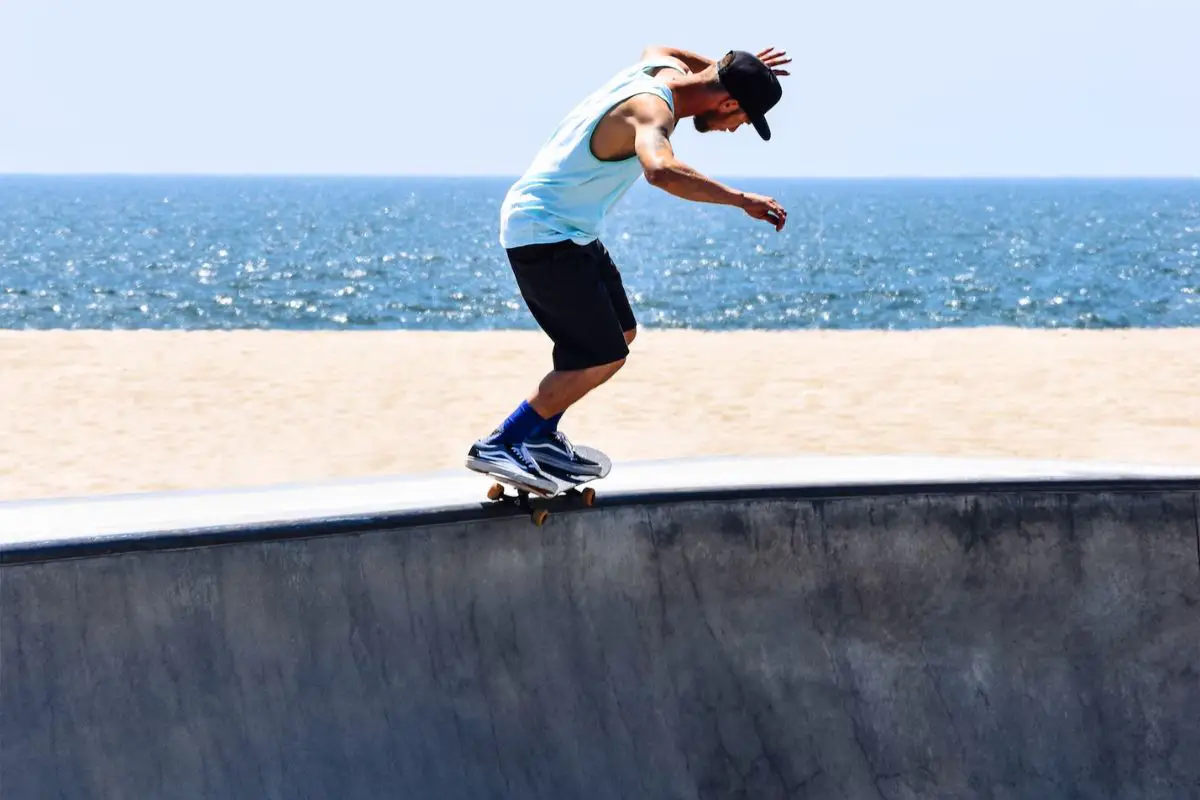
Enjoi Whitey Panda Complete Skateboard

Enjoi Whitey Panda Complete Skateboard
How to carve on a skateboard
Alright, now it’s time to break it down step by step. Let’s look at the solid choices you need to make and the skills you need to develop to become a carving guru in your own right.
Getting the right skateboard
The choice of skateboard can really make or break your carving game. Your deck should be a safe bet with a width between 8 and 8.25 inches, particularly if you’re planning to play around in parks, ramps, or skating pools. Longer skate trips or vertical skating? Go bigger with a deck that’s at least 8.25 inches wide.
In terms of trucks, these should be almost as wide as your deck. For an 8- to 8.5-inch deck, opt for an 8-inch truck axle. If you’re rolling on a 9- to 10-inch deck, stick with a 9-inch axle. The rule of thumb? Larger decks, larger trucks—simple as that.
Investing in the right wheels
When it comes to wheels, size matters. A minimum diameter of 2.12 inches (around 54 mm) is a must-have for carving bowls, skate parks, and vertical ramps. Got a thing for downhill skating and cruising? Go even bigger with wheels that are at least 2.36 inches (or 60 mm). Remember, larger wheels are a solid choice for rough surfaces and extended cruising sessions.
Mastering the basic carving techniques
Before you start carving it up, make sure you’ve got the basics down. Practice balancing on your stationary board, rocking back and forth without lifting your wheels off the ground. Once you’re comfortable with your balance, practice your push-offs on a flat surface, keeping your eyes up, not down, for control.
Choosing your line
Carving is all about rhythm and flow, so planning your route before you set off is crucial. Draw an invisible line in your mind and try to stick to it while you maneuver. Practicing this will help you gain a greater sense of control and build your confidence in carving.
Okay, so taking these steps on board (no pun intended) will get you off to a killer start with your carving. Next time, we’ll dive into more advanced techniques, so stay excited!
Dos and don’ts of carving
Before we ride off, here’s a quick recap of some essential dos and don’ts when it comes to carving on a skateboard. These tips will steer you clear of some common pitfalls and keep your carving fun, not frustrating.
| Do | Don’t |
|---|---|
| Keep your knees bent | Don’t stiffen up |
| Practice balancing stationary | Don’t rush into carving |
| Choose the right skateboard and wheels | Don’t ignore the hardware |
| Ride at a comfortable speed | Don’t push beyond your control |
Additional carving tips
Beyond the basic steps, here are some additional tips I’ve picked up: They can really help take your carving game to a whole new level. Here’s how you can amplify those smooth turns and keep the ride flowing:
- Loosen your trucks: A little more wiggle in your trucks often translates to easier carving. So give those nuts a few turns anti-clockwise!
- Bend your knees: Better carving often comes with a lower center of gravity. Try to bend your knees more when going into turns; it’ll give you better stability and control.
- Lean into the turns: Leaning your body toward the turn can help while carving. Body balance is essential here!
- Visualize your path: As with most skateboard tricks and maneuvers, visualizing your desired line before you start can really make a difference.
- Practice: The more you practice carving, the more confident and smooth you’ll become. Start practicing on flat surfaces or small inclines before moving onto steeper slopes or skate parks.
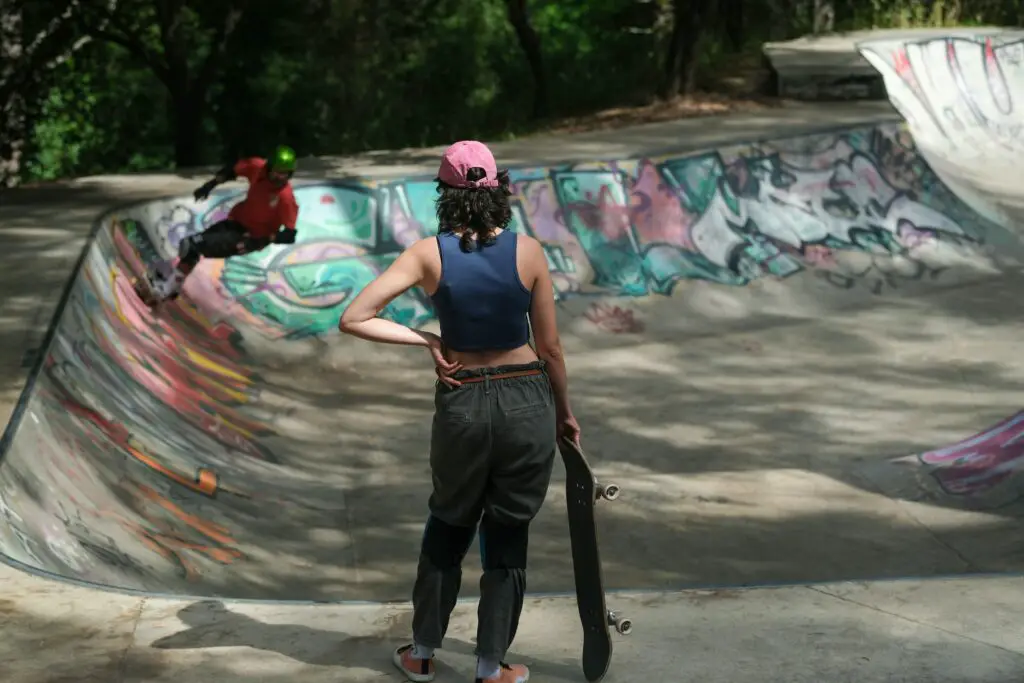
My journey into carving
When it comes to carving, trust me, I’ve been there—tripping over my board, failing to take smooth turns, or losing balance midway. But each scar was a lesson, and each fall was a doorway into better technique. I’ve found that taking the time to understand my board, the nuts and bolts, and the ‘feel’ of it under my feet was a game changer. The experience was somewhat similar to when I was learning to do a backside grab.
When it comes to carving, trust me, I’ve been there—tripping over my board, failing to take smooth turns, or losing balance midway. But each scar was a lesson, and each fall was a doorway into a better technique.
Remember, patience and persistence are your best pals on this journey. Here’s to your carving success, one bend at a time!
Like all skateboarding techniques, carving has some aspects that you should consider. To give you a better understanding, let’s take a look at this handy comparison table between carving on an 8-inch-wide deck skateboard versus the 8.25-inch. The right choice will ultimately depend on your skating style and comfort.
| 8-inch Deck | 8.25-inch Deck | |
|---|---|---|
| Stability | Medium | High |
| Turning | Fast | Moderate |
| Speed | Moderate | Fast |
| Suitability | Parks, Ramps | Long distances, Vertical, Old-school tricks |
Advantages and disadvantages of carving on a skateboard
Just like any other skateboarding trick or technique, carving comes with its benefits and challenges. It’s always better to understand the full picture before hitting the pavement. Let’s dig in:
Advantages
Carving isn’t just a random skateboarding trick. It has some real upsides that I’ve personally found appealing:
- Improved stability: Mastering carving can drastically enhance your overall stability on the board. With each carve, you gain a better understanding of your skateboard’s dynamics.
- Greater control: Whether you’re cruising down the street or tearing through the park, carving gives you more control over your speed and direction.
- Versatility: The terrain is not a limitation of this technique. You can carve your way through whether you’re on a street, park, or ramp.
- Enhanced Skills: Carving is a prelude to many other advanced skateboarding tricks. With its control and stability, you’ll find it easier to take on more complex maneuvers.
Disadvantages
With the pros come the cons; let’s peek into the not-so-great aspects of carving:
- Requires practice: Carving doesn’t come immediately like any other skateboarding trick. It requires consistent practice and commitment.
- Risk of falls: Oversteering or understeering while carving can lead to unexpected falls.
- Hardware dependent: Achieving a perfect carve depends not only on a technique but also on the choice of a skateboard, particularly the truck’s width and wheel diameter.
- Speed moderation: Mastering the skill of controlling speed while carving takes effort and can initially be tricky to get the hang of.
Frequently Asked Questions (FAQ)
I’d be really surprised if you didn’t have a few questions bubbling in your head right now about carving on a skateboard. It’s perfectly normal to be curious, and I bet you’re not alone. So, let’s address some of the most frequently asked questions below:
How do I know I have the right skateboard size for carving?
The right skateboard size for carving really depends on your comfort and your skating style. As a rule of thumb, a deck width of 8 to 8.25 inches suits most skaters well for parks, ramps, and skating pools. Those preferring long-distance skating or vertical skating usually go for decks that are 8.25 inches wide or wider. Check out our detailed guide on choosing the perfect skateboard size for a better understanding.
Can I start carving as a beginner?
Absolutely! Carving is a basic technique that every skateboarder, beginners included, can benefit from. It’s an essential skill that improves stability and control over the skateboard. However, make sure you’re comfortable standing and balancing on the skateboard before you start practicing carving.
How long does it take to learn to carve on a skateboard?
There’s no one-size-fits-all answer to this question. Some might get the hang of it within a few days, while others might take weeks. The key is to be patient and consistent in your practice. Also, remember that everyone has their own pace of learning, and that’s perfectly okay.
What other techniques can I move on to after carving?
After you’ve become comfortable with carving, you can start exploring more advanced techniques and tricks. For instance, you can dive into street plants, pogos, or caspers if you enjoy old-school flat-ground skating. The world of skateboarding is full of possibilities, so go ahead and choose your adventure!
Final thoughts
Skateboarding is not just a sport; it’s a lifestyle, and carving is one of those essential elements that add a unique flavor to your skating journey. It brings you closer to mastering the art of turning, enhancing your balance, and fine-tuning your control. While starting might seem a little daunting, remember that every seasoned skater was once a beginner, too. The key lies in patience and practice.
Let me know your questions in the comments section below I read and reply to every comment. If you found this article helpful, share it with a friend, and check out my full blog for more tips and tricks on skateboarding techniques. Thanks for reading, and keep shredding the gnar!
Key takeaways
This article swooped into the world of carving on a skateboard, discussing how beginners can learn and master this crucial technique. Here are some key takeaways:
- Carving is not merely turning; it’s a rhythmic maneuver that requires a balanced combination of body weight movements and skateboard control.
- The size of your skateboard and wheels significantly influences your carving ability. An 8-inch to 8.25-inch wide deck is suitable for park and ramp skating. Always go for larger wheels, especially for rough terrain.
- Carving requires practice and patience. Start with balancing on your stationary board, then proceed to pushing and finally carving on a chosen line.
- Mastering carving provides greater control and stability and can be a stepping stone to more advanced tricks.

